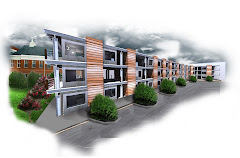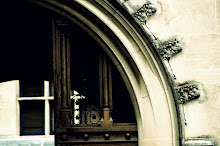Introduction
The purpose of this study is to learn how shipping containers are impacted by extreme weather conditions by simulating environmental conditions in Revit and Ecotect. Elements of this study include energy analysis, cooling and heating, daylighting, natural ventilation, thermal analysis, and acoustics. Furthermore, the structural integrity of these containers will be examined by breaking the units down to the point of failure to identify structural weaknesses. Assessment of these results will aid in the design of an alternative to disaster housing using shipping containers as a source for permanent housing.
Literature Review
This investigation will help to inform me of an appropriate response to the need for improved disaster housing. The current applications of disaster housing vary due to the nature of the disaster. Disaster housing can range from short-term shelters to permanent housing. Generally, establishing these shelters is well choreographed on the local level as organizations execute their emergency plans. The challenge presents itself when individuals are displaced for longer periods of time. The ability to meet individual and household needs become more difficult. While in the past, this plan has been effective, it failed to provide adequate housing for those who were displaced by Hurricane Katrina in August 2005. Now, more than 3 years later, the struggle to correct the issues brought to light by Hurricane Katrina is ongoing. Through this project, I plan to illustrate how simulation can provide a tool to examine elements of the design that would otherwise require full scale prototypes and an extended period of time. The use of CAD in this study will allow for a comprehensive study of shipping containers and how they can function as more than a temporary fix to a larger problem.
Innovations in the world of simulation and visualization are allowing designers to provide structures that are able to adapt to the environment and while operating as a system to take advantage of the surrounding elements. With programs such as Ecotecht and FloVENT, designers are able to design buildings and study the air flow and ventilation without having a physical model present (see Figure 1.). Not only that, but designers are also able to design for environments with extreme climates and take advantage of the natural surroundings to create a building that "works" to provide a comfortable and healthy space for its inhabitants. Adrian Smith and Gordon Gill Architecture (AS+GG) and Environmental Systems Design (ESD), based in Chicago, used Ecotect and other simulation programs to augment their design for Masdar Headquarters in Abu Dhabi's Masdar City, United Arab Emirates (Minutillo, 2008 p.1). The goal was for this city to be the first zero-carbon and zero-waste city that was fully powered by renewable energy and AS+GG Architects were to provide a design that contributed to this goal because of building simulation tools.
AS+GG Architects created staggered cones within the building that provided structural support as well as allowing daylight to seep deep inside the complex. These cones also cooled the interiors by forcing the heat out of the building through the tips (see Figure 2.) (Minutillo, 2008 p.2). Inspiration for these cones were found locally in the Middle Eastern wind towers. This was developed through the simulation of airflow, heat transfer, and contamination distribution in and around buildings. ESD created a simple model of the cones which included the courtyards at their base. This enabled them to better understand the conditions. “By doing such a model, we were able to pinpoint areas of air intake and airflow into the base of the cone,” explains ESD’s Mehdi Jalayerian. Perkins and Will Architects use Ecotect to analyze their design of a perorated enclosure made of a lightweight, precast concrete created to provide shade. Ecotect can measure the solar radiation energy received on a given surface area in a given time, and with this tool the architects were able to precisely calibrate elevations in response to the changing sun angles(Minutillo, 2008, p. 3).
Figure 2
In Los Angeles, building simulation was used to develop an exhibition space within the BCAM building at a recently finished entrance of the LACMA campus (Gonchar, 2008 p.2). This building consists of three stories, and is made up of two volumes that are clad in travertine and are identical to each other. The top floor galleries are lit by a skylight system facing North, but direct light is prevented by aluminum sunshades sloped at 45 degrees. The entire ceiling is designed to “work hard” when considering thermal and daylighting aspects. This light system can create diffused light conditions that lack uniformity(Gonchar, 2008 p.3). To identify the predominant direction of illumination within the gallery space, Arup's lighting design team conducted an analysis of the light passing through the skylight and light reflected between inclined sunshades (see Figure 3.). This analysis allowed them to reassess their design and provide a solution by adding a “kicker” to the bottom edge which bounced light back to the south-facing wall. This allowed for more uniform daylighting conditions.
Figure 3.
Simulation is also being used to prevent disasters such as building fires. The ability to transfer CAD files into fire simulation programs enables designers to better assess how a devastating fire can be averted (Spearpoint, 2007 p.271). The purpose of this technology is not to eliminate the engineering process, but rather to allow the engineer to focus on the design issues instead of establishing simulation tools. Simulation tools are not limited to new construction. Existing buildings can benefit from CAD programs as well. The Darwin D. Martin house by Frank Lloyd Wright has received criticism, but with simulation tools, designers were able to visually breakdown the forms and discover a unique relationship between the fireplace and the rest of the house (see Figure 4.) (Maddalina, 2000 p.2).
Figure 4.
Methodology
The application of this study will consist of modeling a standard shipping container in Revit and using this model to apply simulation studies within Revit and Ecotect. The combination of the findings from Revit and Ecotect will result in a compilation of knowledge about how shipping containers can be used for residential design. For presentation purposes, a possible design will be rendered in Revit and all information found will be displayed through an online site with an interactive format. This will be accomplished through the use of flash and a web development tool. This project will be limited by time constraints and technology available.
The first step of this process will be to create a model of a 8 x 8 x 20 shipping container in Revit. Applying a potential design to this model will allow me to explore how the environment may impact an altered shipping container which will better inform me of how to proceed in the design process. The site for this investigation will be New Orleans, LA and through these CAD programs, I will be able to identify site specific effects of the environment.
The second step will be to import this model into Ecotect to perform analyses of environmental factors. These analyses will include thermal, solar exposure, and acoustic response, predominant wind factors, solar radiation, etc. Once the analyses have been performed the data will be gathered to create a comprehensive study of environmental impacts. This will be presented in an interactive format online to contribute to the general body of knowledge.
Results
Results of this study consist of an interactive website that will inform viewers how shipping containers may be used and manipulated to provide housing for others. This will help to inform me in my thesis as well, by illustrating how shipping containers can withstand extreme weather conditions and how they will function within a residential setting. This will then help to dictate how shipping containers could be used to provide an alternative to traditional disaster housing. Ideally a more generalized goal for this study will be to provide a contribution to the body of knowledge. The format of this website will be a simple organization of the different environmental impacts grouped in relation to each other. Viewers will be able to view each individually or they may view a overall anaysis of how each combines. Viewers will also have the ability to browse the site at their convenience due to a simple navigation system.
Conclusion
References
Minutillo, J. (2008). Model Behavior: Anticipating Great Design. Architectural Record, (2008), 4.
Gonchar, J. (2008). Let the (Indirect) Sun Shine In | From Architectural Record | Originally published in the May 2008 issue of Architectural Record | McGraw-Hill Construction - Continuing Education Center. Architectural Record, (2008), 5.
Spearpoint, M. (Nov 2007). Transfer of architectural data from the IFC building product model to a fire simulation software tool. Journal of Fire Protection Engineering, 17, 4. p.271(22). Retrieved April 21, 2010, from Academic OneFile via Gale: http://find.galegroup.com/gtx/start.doprodId=AONE&userGroupName=gree35277
Maddalina, M. (2000). ArchitectureWeek - Tools - Computer Visualization as a Tool for Critical Analysis - 2000.0705. Architecture Week, 2.







Wow that was a long one. I wish I followed. Thanks!
ReplyDelete